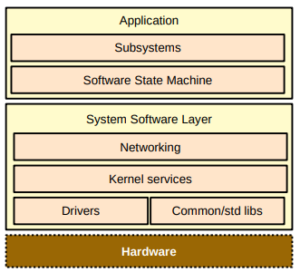Three new KM3NeT papers
Recently, three KM3NeT papers were accepted by peer-reviewed scientific journals and came on line.
Note, that KM3NeT has an open science policy which means that all papers can be read open access, i.e. without a paywall.
1. Following up gravitational wave events – a scientific paper. In the paper ‘Searches for neutrino counterparts of gravitational wavesfrom the LIGO/Virgo third observing run with KM3NeT‘ we report the results of a neutrino follow-up study of gravitational wave sources detected by the LIGO-Virgo interferometers in 2019–2020.
The search focuses both on MeV neutrinos and high-energy neutrinos. No significant excess was observed for any of the sources. Upper limits on the neutrino emission from individual sources and the typical emission from binary black hole mergers were computed and compared with the constraints from other neutrino telescopes.
JCAP04(2024)026, DOI: 10.1088/1475-7516/2024/04/026
2. Differential Sensitivity of ARCA – a scientific paper. In the paper titled ‘Differential Sensitivity of the KM3NeT/ARCA Detector to a Diffuse Neutrino Flux and to Point-like Source Emission: Exploring the Case of Starburst Galaxies‘, for the first time, KM3NeT presents the expected differential sensitivity of the full ARCA detector for both diffuse and point-like neutrino fluxes.
In particular, this study is applied to Starburst Galaxies, demonstrating that the ARCA detector, when completed, can trace TeV neutrinos from these sources. For instance, with ARCA it will be possible to discriminate between different astrophysical components in NGC 1068 after 3 years of data taking, strengthening the observations of the IceCube Neutrino Observatory.
In the pictures: (left) the sensitivities of the ARCA detector after 10 years of operation as a function of neutrino energy, compared to measurements of the IceCube neutrino observatory; (right) the discovery neutrino flux as a function of operation time.
Astroparticle Physics, Volume 162, DOI: 10.1016/j.astropartphys.2024.102990
3. Powering optical modules – a technical paper. The optical modules in the KM3NeT neutrino telescope in the deep Mediterranean Sea receive electrical power from the control station on the shore. An electronics board – dubbed the Power Board – in each optical module is described in the paper ‘The Power Board of the KM3NeT Digital Optical Module: design, upgrade, and production’. The board arranges powering individual components in the module at different voltage levels. The Power Board has been subjected to rigorous test to ensure reliable operation in the deep sea for more than a decade.
In the picture a photo of the Power Board with the various DC/DC converters generating the voltages needed.
Electronics 2024,13(11), 2044, DOI: 10.3390/electronics13112044
In addition, three new pre-prints were stored on the arXiv and submitted to the relevant scientific journals for peer-review:
- Astronomy potential of KM3NeT/ARCA, arXiv:2402.08363, submitted to EPJ-C
-
Atmospheric muons measured with the KM3NeT detectors in comparison with updated numeric predictions, arXiv: 2403.11946, submitted to EPJ-C
- Search for Neutrino Emission from GRB 221009A using the KM3NeT ARCA and ORCA detectors, arXiv: 2404.05354, submitted to JCAP
We will report on these once they are accepted for print by the journals.






